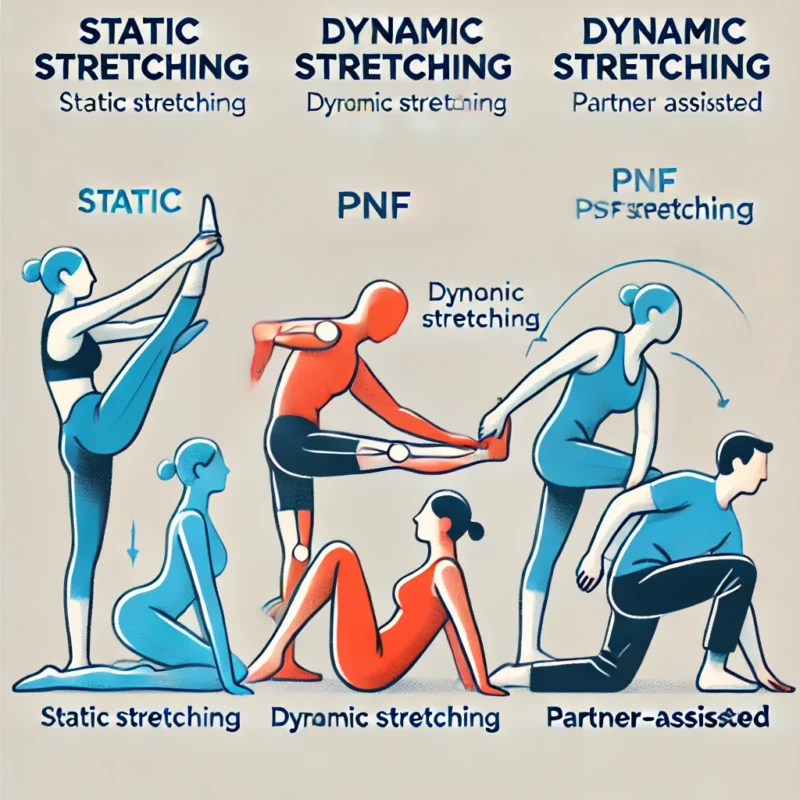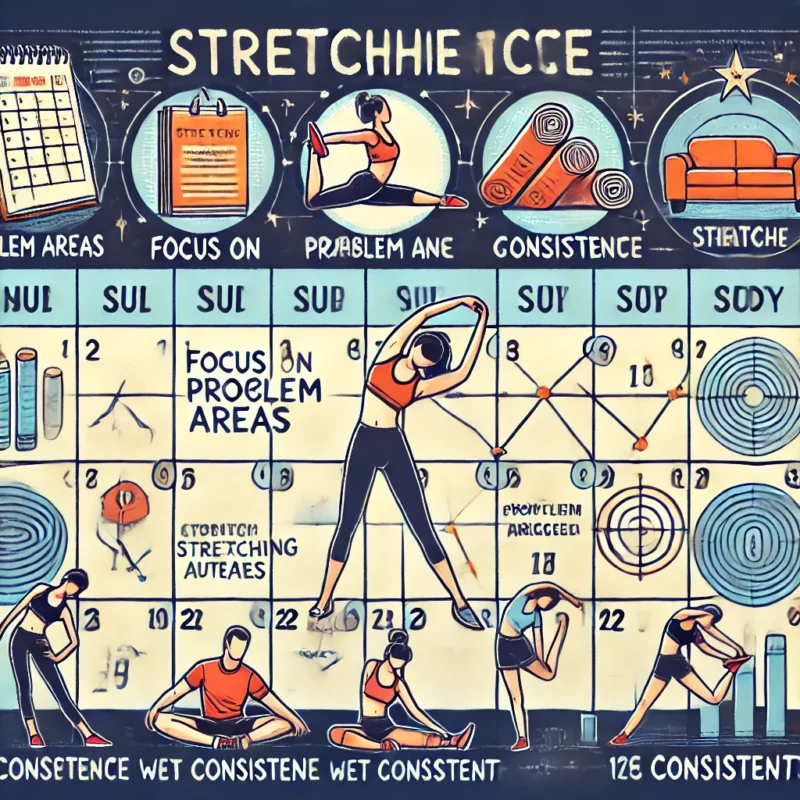Stretching, also known as flexibility training, is a vital part of any fitness routine, yet it’s often one of the most neglected. Many people skip stretching because they’re either unaware of its benefits or assume it doesn’t contribute much to their overall fitness goals. However, this couldn’t be further from the truth. Proper stretching not only relaxes your muscles after a workout but also enhances blood circulation, improves flexibility, and minimizes the risk of injury. When done correctly, stretching serves as a bridge that connects intense physical activity with effective recovery, leading to both physical and mental benefits.
Post-workout stretching involves lengthening and loosening your muscles, which, after exercise, may feel tight or contracted. While some people perceive stretching as an optional activity, science and experience both show that it is crucial for maximizing the effectiveness of workouts. After exercise, stretching not only helps return the body to its resting state but also prepares it for future challenges. In this article, we’ll explore the importance of stretching, the various types of stretches, how to perform them correctly, and the benefits they provide.
Table of Contents
The Importance of Stretching for Your Body

1. Reducing Muscle Soreness After a Workout
One of the most immediate benefits of stretching after exercise is that it helps to minimize muscle soreness, also known as DOMS (Delayed Onset Muscle Soreness). DOMS typically begins 24 to 48 hours after an intense workout, resulting in stiffness and discomfort. This soreness occurs because, during exercise, microscopic tears form in the muscle fibers. While these tears are necessary for muscle growth and strength, they also lead to pain and stiffness if not properly managed. Stretching helps to alleviate DOMS by enhancing blood flow to these areas, providing oxygen and nutrients that aid in recovery, and reducing the buildup of lactic acid that can worsen the pain.
When you stretch, you allow blood to flow more freely to these sore spots, delivering oxygen and nutrients that accelerate the recovery process. This reduces the overall soreness, allowing you to get back to working out sooner without being hindered by residual pain. For beginners or those engaging in high-intensity workouts, stretching becomes even more essential. Furthermore, by reducing DOMS, stretching can positively impact mental motivation; when you’re not in pain, you’re more likely to stay committed to a regular exercise regimen.
2. Enhancing Flexibility and Range of Motion
Stretching not only helps alleviate soreness but also plays a critical role in improving your body’s flexibility. Flexibility is crucial for effective movement and enhances your performance in various exercises. When you stretch regularly, your joints and muscles become more flexible, increasing your range of motion and making your movements smoother. Increased flexibility is essential for reducing the risk of injuries and improving the efficiency of your workout sessions.
Flexibility is often overlooked but is one of the most fundamental aspects of physical fitness. Improved flexibility allows you to perform exercises like squats, lunges, and deadlifts with a full range of motion, optimizing the effectiveness of each movement. Additionally, flexibility is crucial in daily life; reaching, bending, and twisting all become easier and less stressful on the body when you are flexible. Flexibility not only makes you more capable physically but also helps prevent injuries by reducing strain on your muscles and joints.
3. Preventing Injuries in Workouts and Daily Life
When your muscles and joints become more flexible through stretching, your body can adapt more easily to different types of movements, which reduces the risk of injuries caused by tight muscles or limited joint mobility. Stretching after exercise is an effective way to help your body recover and prepare it for future activities. Stretching maintains flexibility, which helps prevent injuries such as muscle strains, tears, and joint sprains, both during workouts and in everyday activities.
Regular stretching doesn’t just benefit future workouts; it has positive implications for daily activities. A flexible and healthy body allows you to perform daily tasks, such as bending down to pick up items or reaching for things on high shelves, without strain or risk of injury. Stretching is especially beneficial for older adults or people with sedentary jobs, as it improves joint health and helps prevent issues such as back and neck pain. A flexible body is one that’s ready to move safely, both in the gym and in everyday life.
4. Enhancing Future Workout Performance
Flexible, limber muscles allow you to perform exercises more easily, which ultimately enhances the effectiveness of future workouts. Stretching after a workout helps maintain muscle strength and performance, allowing you to continue exercising consistently without the risk of tightness or stiffness. When muscles are tight or overworked, they are more prone to injury and fatigue, which can affect the quality of your workouts. Stretching keeps your muscles relaxed and ready for the next challenge, ensuring that your training progresses without setbacks.
By stretching regularly, you give your body the foundation it needs to achieve optimal performance. This becomes particularly crucial for athletes or fitness enthusiasts who rely on consistent progress. Stretching as part of your routine allows you to maximize your potential, as your muscles and joints will be ready to handle increased intensity and new challenges. In this sense, stretching serves as a form of preventive care, ensuring that you can continue to reach your fitness goals safely and effectively.
5. Supporting Mental Health and Relaxation
An often-overlooked benefit of stretching is its impact on mental health. Stretching has a relaxing effect on both the body and mind, reducing stress and promoting a sense of calm. When stretching is combined with deep breathing, it can help to reduce stress and alleviate mental tension. The focus and mindfulness that come with stretching allow you to connect with your body and mind, creating a sense of inner peace and clarity. This makes stretching a valuable tool not only for physical recovery but also for mental well-being.
Stretching after a workout can also help you unwind, transitioning from the high energy of exercise to a more relaxed state. By integrating breathing techniques and gentle movements, stretching can become a form of active meditation, providing mental benefits alongside physical relaxation. This aspect of stretching can be especially helpful for those with high-stress lifestyles or for anyone looking to improve their overall mental health.
Types of Stretching

Understanding the different types of stretching is essential for maximizing its benefits. Here are three primary types of stretching commonly used in fitness routines:
1. Static Stretching
Static stretching is the most common and straightforward method, often performed after workouts. It involves holding a stretch in a fixed position for a specific amount of time, usually between 20–30 seconds, allowing the muscle to relax and release tension. Static stretching is ideal for cooling down after exercise, as it promotes muscle recovery and prevents tightness.
For example, a simple quadriceps stretch involves holding one leg behind you with the foot pulled toward your glutes. By maintaining this stretch for 30 seconds, you’re allowing the quadriceps to release any tension and return to a relaxed state. Static stretching is effective because it provides a sustained release of muscle tension, making it an essential component of post-workout routines.
2. Dynamic Stretching
Dynamic stretching involves continuous, controlled movements that help warm up the muscles and improve blood flow. Unlike static stretching, dynamic stretching doesn’t require holding a position but instead focuses on moving joints and muscles through their full range of motion. This type of stretching is ideal for preparing the body for physical activity, as it helps to increase flexibility and reduce muscle stiffness.
Examples of dynamic stretches include leg swings, arm circles, and walking lunges. By moving actively through these stretches, you engage the muscles in a way that prepares them for high-intensity exercises. Dynamic stretching is especially beneficial before workouts as it not only improves flexibility but also enhances coordination and body awareness.
3. Proprioceptive Neuromuscular Facilitation (PNF)
PNF stretching is a more advanced technique often performed with a partner or trainer. PNF involves contracting a muscle before stretching it, which can lead to a greater increase in flexibility. This method is effective in enhancing muscle elasticity and range of motion but should ideally be done under the guidance of a professional, as it requires a certain level of skill and control.
An example of PNF stretching would be contracting the hamstring for a few seconds and then stretching it with a partner’s assistance. PNF stretching is highly effective for people who want to quickly improve flexibility, making it popular among athletes and fitness enthusiasts.
How to Stretch Correctly: A Guide to Proper Technique

Proper stretching technique is key to reaping its full benefits. Here are some essential tips for stretching safely and effectively:
- Hold Duration: Aim to hold each stretch for 20–30 seconds. This duration allows your muscles to relax and lengthen properly, ensuring maximum effectiveness.
- Breathe Deeply: Always incorporate deep breathing into your stretching routine. Take slow, deep breaths to promote relaxation and enhance the stretch’s benefits.
- Avoid Overstretching: Never stretch to the point of pain. Overstretching can cause muscle strain or injury. Focus on gentle tension, not discomfort.
- Stretch Slowly and Gradually: When performing each stretch, ease into it slowly, allowing your muscles time to adjust. Avoid bouncing or jerking movements, as these can lead to injury.
Incorporating Stretching Into Your Daily Routine

Making stretching a regular part of your fitness regimen can significantly improve your flexibility, prevent injuries, and enhance overall wellness. Here are some tips for integrating stretching into your daily routine:
- Schedule Regular Stretching Sessions: Try to stretch at least 3–4 times a week, or after every workout, to maintain flexibility and prevent muscle tightness.
- Focus on Problem Areas: If you have tight or sore muscles, dedicate extra time to those areas. Consistently stretching problem areas can alleviate discomfort and improve mobility.
- Stay Consistent: Like any aspect of fitness, consistency is key. Regular stretching yields the best results, so make it a priority in your routine.
Conclusion
Stretching after a workout offers numerous benefits for both the body and mind. By including post-workout stretching in your routine, you can improve flexibility, prevent injuries, and enhance overall workout performance. Additionally, stretching promotes relaxation and reduces stress, supporting mental well-being alongside physical health. Make stretching a part of your fitness journey to enjoy a healthier, more flexible body and a refreshed mind.
